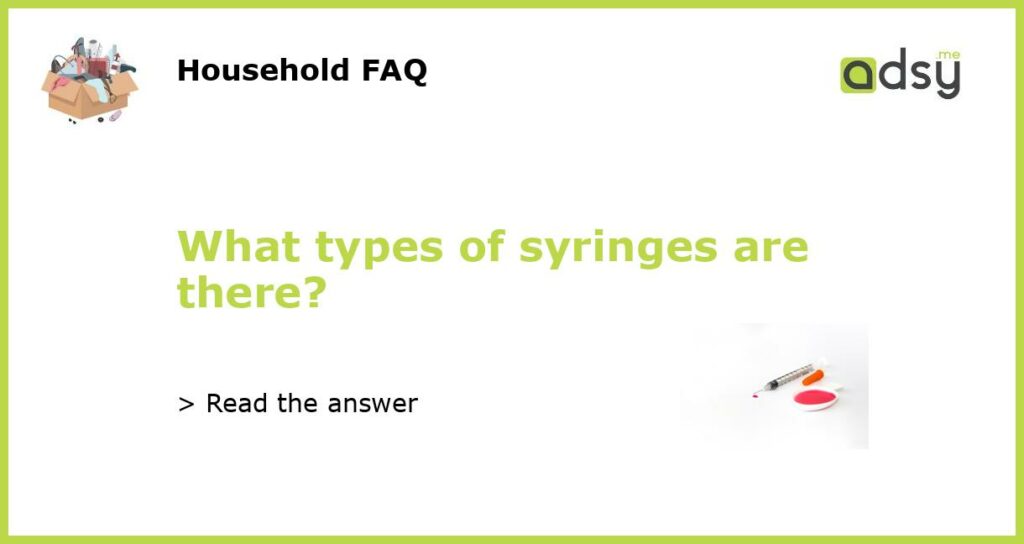Introduction to Syringes
Syringes are medical instruments that are used for injecting or withdrawing fluids from the body. They consist of a barrel, a plunger, and a needle. Syringes are essential in various medical settings such as hospitals, clinics, and homecare for administering medication or collecting samples. Syringes come in different sizes, designs, and types to serve a variety of purposes. In this article, we will explore the different types of syringes available in the market.
Standard Syringes
The most common type of syringe is the standard syringe, also known as the Luer lock syringe. These syringes have a screw-like shape at the tip that allows the needle to be securely attached to the syringe. The Luer lock design prevents the needle from accidental detachment during procedures, ensuring safety for both the healthcare professional and the patient. Standard syringes come in various sizes, with the most common ones being 1 mL, 3 mL, 5 mL, and 10 mL.
Insulin Syringes
Insulin syringes are specifically designed for administering insulin, a hormone used to manage diabetes. These syringes have a finer needle and smaller volume capacity compared to standard syringes. Insulin syringes typically come in 0.3 mL, 0.5 mL, and 1 mL sizes. The smaller volume capacity allows for accurate dosage measurement, especially for individuals who require small amounts of insulin. Insulin syringes are marked with units of insulin measurement, making it easier for users to determine the correct dosage.
Tuberculin Syringes
Tuberculin syringes are used for administering tuberculin purified protein derivative (PPD) tests, which are used to detect tuberculosis infection. These syringes are designed with a small volume capacity of 1 mL and a long, thin needle. The small volume capacity allows for precise measurement of the tuberculin solution, while the long, thin needle allows for accurate intradermal injection just beneath the skin surface. Tuberculin syringes are marked with units of measurement to ensure accurate dosing.
Safety Syringes
Safety syringes are designed with additional features to prevent needlestick injuries and promote safe use. These syringes are commonly used in healthcare settings to protect healthcare professionals from accidental needle pricks that can lead to transmission of bloodborne pathogens. Safety syringes may include mechanisms such as retractable needles, needle shields, or needle lock mechanisms. These features help minimize the risk of needlestick injuries and make the syringes safe to dispose of after use.






